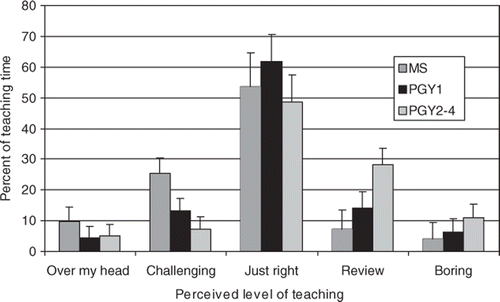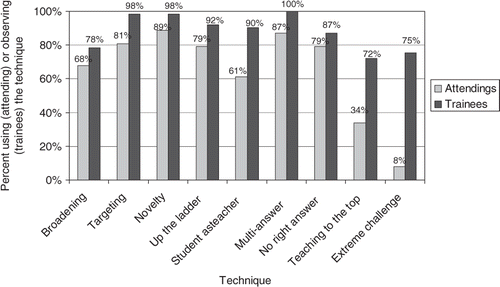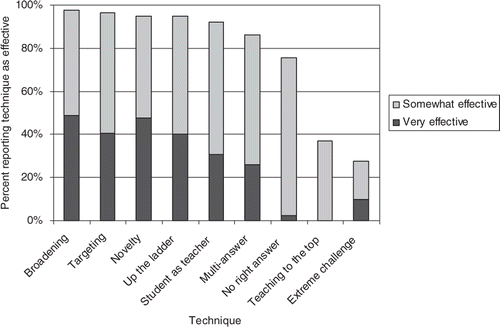Figures & data
Table 1. Descriptions of multilevel teaching techniques
Table 2. Demographics of respondents
Figure 1. Perceived appropriateness of teaching. Mean estimated proportion of time that teaching on attending rounds was (a) above the trainee's level and not useful (Over My Head), (b) above the trainee's level but stimulated learning (Challenging), (c) appropriate to the trainee's level (Just Right), (d) below the trainee's level but a useful review (Review), or (e) below the trainee's level and boring/not useful (Boring). Error bars indicate 95% confidence intervals. Trainees are grouped by level into medical students (MS3/4), interns (PGY1), and residents (PGY2–4).


